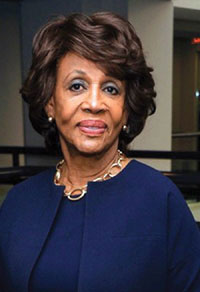How the Army addressed racial tensions
By Harry C. Alford, NNPA Columnist
I remember sitting through a lecture in a sociology class during my senior year at the University of Wisconsin. The professor was boring and I had a newspaper. I looked at the front page and not-iced a list of dates. They were birth dates for the new Army draft lottery. Most exemptions from the draft were gone and President Richard M. Nixon implemented the draft lottery based on birth dates. There it was, my birth date – Feb. 14 – listed as the fourth number to go. Those with the first 100 birth dates were going to get drafted into the Army and I was near the top of the list. My first thoughts: “My future is toast. I am going to go to Vietnam and catch a bullet or grenade. If I survive, I am not going to live on a college salary but a drafted private in poverty.”
Procter & Gamble had already made me a job offer. My fear was that my draft status was going to kill the employment opportunity, if not me. However, my corporate recruiter told me not to worry. In fact, he said that what I presented to them was an opportunity. I could go into the Army and come out an officer. That would give me a “triple.” I would be college degreed plus a competitive athlete via football as well as a military officer.
He showed me how to apply for Officer Candidate School and I was soon accepted. Thus, I worked a few months before it was time to get inducted and then off to Officer Candidate School in Fort Benning, Ga.
The racial tension that soared immediately after the assassination of Dr. Martin Luther King, Jr. in 1968 was starting to carry over into the Army. That would make sense as they were drafting young men at a rapid pace and Blacks would be over-represented in the demographics, especially among junior ranking soldiers. Blacks and Hispanics had no slick attorneys to help them avoid service like so many white young men. Fights, threats and even murder were starting to appear in the ranks, especially in Vietnam. You can’t have an efficient fighting military when the soldiers are fighting among themselves.
The Army was a snap for me. My football conditioning came in handy and compared to many of the draftees, my charisma was glowing. If it weren’t for wars, I would have stayed forever. A few months after I finished OCS and Finance School, I was assigned to Dugway Proving Grounds, Utah, 70 miles southwest of Salt Lake City. Three months into my new assignment, I was appointed the Race Relations Officer. The Pentagon decided to aggressively address the racial problems it was having in the field. Each brigade would have an active Race Relations Officer who would report to the Commanding Officer on a regular basis and would also directly report to the Pentagon any serious and negative activity. I spent three weeks at the new Race Relations Training School in Fort Benning. More than 90 percent of the Race Relations Officers were Black.
We would get together three times a year and compare our experiences –what worked well and what didn’t. A formal summary would be crafted for review by the Pentagon. I would now counsel personnel who had complaints or suspicions. I would write columns on Black history and self-esteem in the local newspaper. Many white soldiers would come to me and say things like, “I didn’t know coloreds did that.” Just the fact that it was well known that we had a Race Relations Officer who was accessible 24/7 made things a lot better.
Whites, especially southern whites, started to enjoy a new comfort level. At my post, we had a majority of Mormons who were trying to change their image. The denomination there barred Blacks from joining their church until the mid-1970’s. The change was sincere and our military was better because of this program.
There was one personal “hiccup.” I received a call from our contact at the Pentagon. The colonel asked me to explain why a cross burning was considered a minor act on my watch. I replied that it wasn’t. He said, “I am sending this report to you and want an explanation.”
The Commanding Officer had executed his own report and sent it in as if it were from me. I asked him for an explanation since the eyes of the Pentagon were upon us. He broke clean. Someone put a 4’ cross in a Black sergeant’s yard. The military police caught the culprit. He was the child of the post’s Executive Officer, the second-highest ranking officer in command. The Commanding Officer was embarrassed, so they kept the identity of the perpetrator secret and asked the Black sergeant to be quiet about it for the sake of peace – and he did. The Pentagon accepted the final version.
This Army-wide program succeeded and the main reason is that we owned up to the problem and sat down with each other to just “get along” as Rodney King would later admonish the public.





Be the first to comment